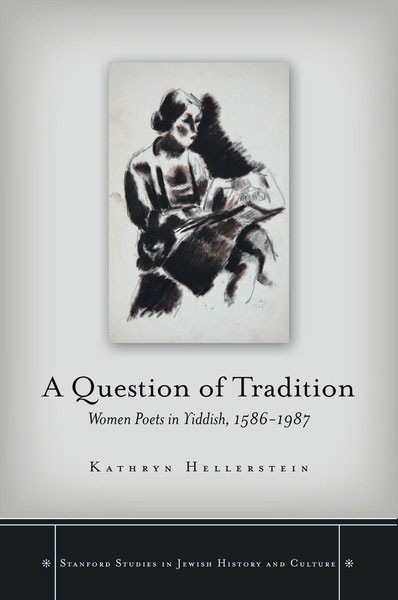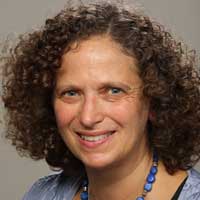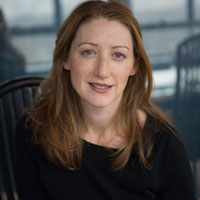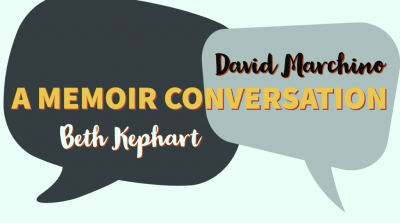 Nonfiction by Kathryn Hellerstein, reviewed by Alyssa Quint
Nonfiction by Kathryn Hellerstein, reviewed by Alyssa Quint
A QUESTION OF TRADITION: WOMEN POETS IN YIDDISH, 1586-1987 (Stanford University Press)
Poetry by female Yiddish writers has become the tree that falls in the empty forest of Jewish literature. As a discrete body of work it resonated only faintly with the same Yiddish critics and scholars who gushed over male Yiddish authors. English translations have become an important repository of the dying vernacular of East European Jews but, again, not so much for its female poets. Women’s Yiddish poetry finally gets its scholarly due from Kathryn Hellerstein, long-time champion of the female Yiddish poetic voice, in her comprehensive and accessible account, A Question of Tradition: Women Poets in Yiddish, 1586-1987.
Hellerstein organizes her book around the concept of a literary tradition as invoked by the likes of T.S. Eliot in his monumental essay “Tradition and the Individual Talent.” To Eliot’s eloquent if male-dominated and Eurocentic discussion of what “compels a man to write,” (my italics), Hellerstein counters with a chain of women who work off the energy of the East European Jewish female experience with its idiosyncrasies of language, religion, gender, and culture.
The Yiddish poetry of the sixteenth to eighteenth centuries is most gratifying for the reader as literary tradition to the moderns rather than as literature in its own right. It consists mostly of prayers shaped by piety and mortal fear of a community in crisis. Under these conditions, East European Jewry every so often generated the rare thing: a female composer of verse. Not in Hebrew, the usual language of Jewish prayer, these examples of Yiddish vernacular “brought women’s voices into the synagogue service,” as Hellerstein explains. But they only barely rise to the level of poetry.
These small bundles of Yiddish prayers became sturdy tradition for modern Yiddish poetesses. As a group, the twentieth-century female poets were cosmopolitan and multilingual. Still, the old Yiddish prayers were “in their bones,” as Eliot might have observed.
One of the most singular voices belonged to Kadya Molodowsky, born in White Russia who came of age during World War I and cultivated her poetic voices over decades. A secular Jew, Molodowsky nonetheless deploys the prayer’s form to plead for heavenly attention:
I have so much prayer,
But, as a blade of Your grass in a distant, wild field
Loses a seed in the lap of earth
And dies away,
Sow in me Your living breath,
As You sow a seed in the earth.
(135)
Lovely in its unexpected syntax, “I have so much prayer”, the phrase simultaneously expresses abundance and desire. For Molodowsky, poetry as Jewish prayer is complicated; it doesn’t yield enough of a creative or intellectual canvas without work, without unfurling its corners. She can’t settle into the language of traditional Judaism, for instance, without judging its neglect of women’s intellect:
And why should this blood without blemish
Be my conscience, like a silken thread
Bound upon my brain?
As Hellerstein comments, “the binding thread [. . .] evokes the straps of the phylacteries (two small leather boxes containing prayers worn by observant men during prayer).” Why should the “blood without blemish,” or menstruation be one of the only ways Jewish women are bound by Jewish law when the legal tradition for men is so rich and varied?
The poems of the moderns stem from their pious grandmothers but generate a new Yiddish poetic language. In it, Molodowsky writes about her adulterous relationship and Celia Dropkin, also of White Russia, writes of sexual desire:
Spoiled, stroked by many women’s hands
You were the one I met on my way,
Young Adam.
And before I had placed my lips on you,
You begged me
With a face more pale and tender
Than the tenderest lily:
-Don’t bite me, don’t bite me.
I saw that your body
Was entirely covered with teeth marks,
So tremblingly, I bit into you.
Here the man is the delicate lily, the woman, not a seductress but an active aggressor. Elsewhere in this body of poetry, as Hellerstein highlights, prostitution and scenarios of pregnancy and abortion move these poems far from the modality of prayer.

Hellerstein’s book is comprehensive, supplying the biographical details of six important poets’ lives in one volume for the first time. Letters she quotes are revealing. She includes the female poets’ shy asides in their letters when they are asked for photographs of themselves. By this time, studio photographs of smartly-dressed male Yiddish writers circulated widely as postcards and appeared in Yiddish newspapers. In contrast, the female poets are embarrassed by their appearance.
We already knew about the six poets; Hellerstein herself had translated some of their work into English previously. Anna Margolin is probably the best known: “This is the night, the grief, the not-becoming,/The treacherous light of dreams.” Hellerstein might have pointed to lesser-known modern female Yiddish voices and she might have drawn on greater scholarly discussions about women’s literature to refine the poetic tradition her book presents.
Still, her book provides an amplitude to the discussion of these women that was previously denied them. The translations, accurate in meaning and still with the effortlessness of poetic language, capture the urgency of their voices. And Hellerstein’s book lays to rest any question of tradition; it is there: inflected by prayer as the book’s framework suggests, but also colored by difficult lives and a confidence born of their survival.
Here is one of the last Yiddish poets, Malka-Hefetz Tussman, in a poem she wrote after she emigrated to America:
My cheek on the earth
And I know why mercy
Lips to the earth
And I know why love.
My nose in the earth
I know why theft.
Teeth in the earth
I know why murder.
Tussman’s verse reflects a voice shaped by difficult circumstances, but this time post-prayer, all-knowing, and self-assured.
Sometime in the late 1920s the Yiddish poet Roza Yakubovitsh noted in a letter from her native Polish city of Kalisz that “little by little indeed the visage of the Yiddish woman poet rises to reveal itself.” (404) In Hellerstein’s study, it is indeed revealed.
 Alyssa Quint is the author of a forthcoming book on the Yiddish theater entitled The Social Life of Jewish Theater in Imperial Russia. She lives in New York City.
Alyssa Quint is the author of a forthcoming book on the Yiddish theater entitled The Social Life of Jewish Theater in Imperial Russia. She lives in New York City.
Read more from Cleaver Magazine’s Book Reviews.



